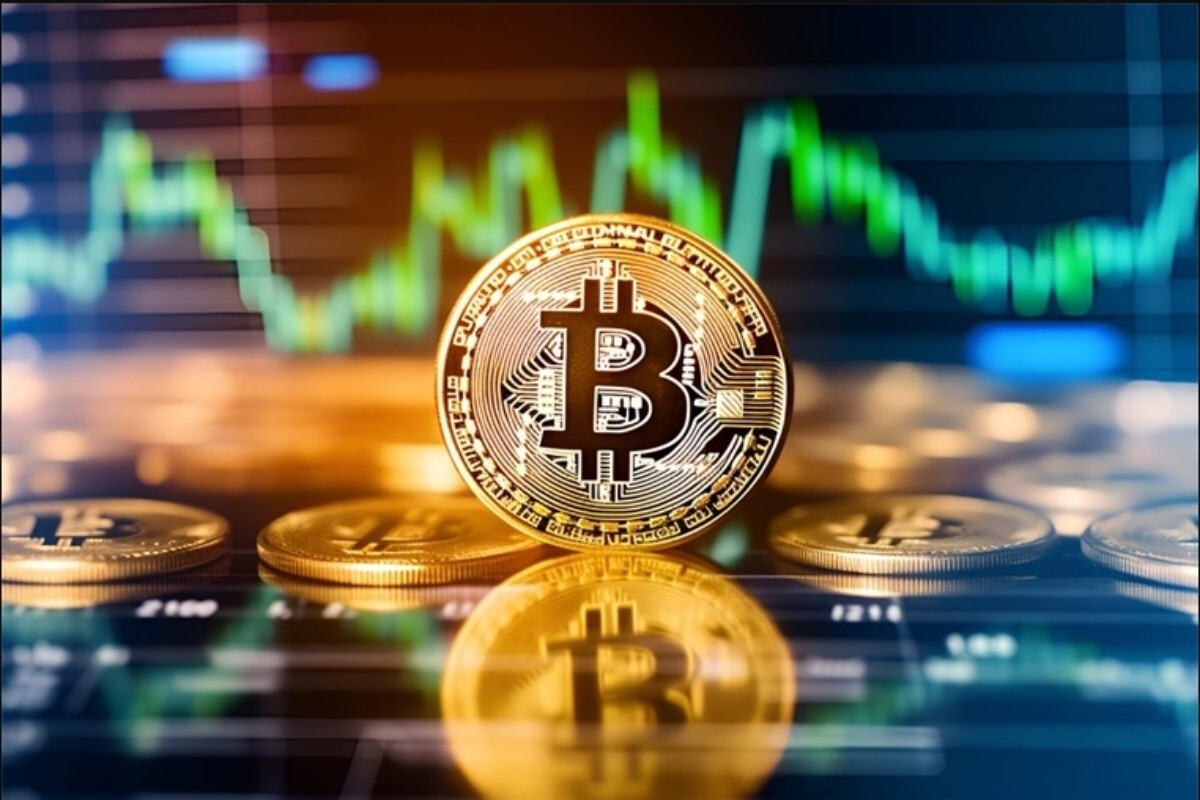Author: fejau Translated by: Block unicorn
I want to write down some of the things I have been thinking about, how will Bitcoin perform in an unprecedented major change in the capital flow pattern? I think that once the share reduction is over, Bitcoin will usher in a wonderful trading opportunity. In this article, I will elaborate on my thoughts in detail. Let's get started.
What are the key drivers of Bitcoin prices in history?
I will draw on Michael Howell's research on historical drivers of Bitcoin prices and further understand how these intertwined trends may evolve in the near future.
As shown in the above image, the drivers of Bitcoin include:
Investors' general preference for high-risk, high-beta assets
Relevance to gold
Global liquidity
Since 2021, my simple framework for understanding risk appetite, gold performance and global liquidity is to focus on fiscal deficits as a percentage of GDP in order to quickly understand the fiscal stimulus that has dominated global markets since 2021.
Increased fiscal deficit as a percentage of GDP will mechanically lead to higher inflation, higher nominal GDP, resulting in higher corporate revenues, as revenue is a nominal indicator. This will be of great benefit to companies that can enjoy the benefits of economies of scale.
In most cases, monetary policy has been at a secondary position relative to fiscal stimulus, which is the dominant driver of risk asset activity. As the charts updated regularly by @BickerinBrattle show, the monetary stimulus in the United States is so low-key relative to fiscal stimulus that I will put it on hold in this discussion.
As shown in the figure below, the U.S. fiscal deficit as a percentage of GDP in major developed Western economies is significantly higher than any other country.
With such a large fiscal deficit in the United States, economic growth has been dominant and has led to significantly better performance in the U.S. stock markets than other modern economies:
Due to this dynamic, the U.S. stock market has been the main marginal driver of risk asset growth, wealth effects, and global liquidity, so global capital flows are most favorable to it: the United States. As this dynamic of capital inflow into the United States, coupled with a huge trade deficit, the United States acquires goods while foreign countries acquire dollars, and they then reinvest the U.S. dollars in US dollars in assets denominated (such as U.S. Treasury and MAG7), the U.S. has become the main driver of all global risk appetite:
Now, back to Michael Howell's writings. Risk preference and global liquidity have been driven primarily by the United States in the past decade, and this trend has accelerated since the COVID-19 pandemic as the U.S. fiscal deficit is much higher than other countries.
So, although Bitcoin is a global liquid asset (not just the United States), it has become increasingly positively correlated with U.S. stock markets since 2021:
Now, I think the correlation with the U.S. stock market is false. When I use the word "pseudo-correlation" here, it is statistically speaking, because I think there is a third causal variable that is not reflected in the correlation analysis, but it is actually a driving factor. I think that's global liquidity, as we mentioned above, global liquidity has been dominated by the United States for nearly a decade.
When we dig into statistical significance, we must also establish causality, not just positive correlations. Fortunately, Michael Howell also demonstrated the causality relationship between global liquidity and Bitcoin through the Granger Causality test:
What kind of benchmark does all this provide for us?
Bitcoin is mainly driven by global liquidity, and as the United States has been the main driver of global liquidity growth, a pseudo-correlation has emerged.
Now, over the past month, as we all speculate on the goals of Trump’s trade policy and the restructuring of global capital and commodity flows, some dominant narratives have emerged. I think these narratives include:
The Trump administration wants to reduce its trade deficit with other countries, which inevitably means a decrease in the flow of dollars to foreign countries, which will no longer be invested in U.S. assets. This is inseparable from the reduction of the trade deficit.
The Trump administration believes that foreign currencies are artificially suppressed, so the dollar is artificially overvalued and hopes to rebalance the situation. In short, a weaker dollar and stronger foreign currencies will lead to higher interest rates in other countries, causing capital to return to their home countries to obtain these rates, which perform better after foreign exchange adjustments, while also supporting domestic stock markets.
Trump’s preemptive, question-and-answer trade negotiations are lifting the rest of the world out of the shackles of (described above) of a trivial fiscal deficit compared to the United States, and investing in defense, infrastructure, and general protectionist government investments to enhance self-sustainability. Regardless of whether the tariff negotiations are easing or not, I think the situation here is irreversible and countries will continue to pursue this goal anyway.
Trump wants other countries to increase defense spending as a percentage of GDP and contribute more to NATO spending, as the United States has been covering most of the costs. This will also increase the fiscal deficit.
I will put aside my personal opinion on these ideas, there are already a lot of discussions outside, and I only focus on the impact that might have if these narratives develop to the end of the logic:
Capital will leave USD-denominated assets and return to its home country. This means that U.S. stock markets will perform worse than the rest of the world, with bond yields rising and the dollar lower.
This capital will flow back to a place where fiscal deficits will no longer be restricted, and other modern economies will start spending and printing money to fund these increased deficits.
As the United States moves from global capital partners to a more protectionist role, dollar asset holders will need to raise the risk premium associated with these once-quality assets and mark them with a larger margin of safety. As this happens, it will lead to higher bond yields, foreign central banks will begin to seek to diversify their balance sheets, no longer holding only US Treasuries, but investing in other neutral commodities such as gold. Similarly, foreign sovereign wealth funds and pension funds may also pursue this portfolio diversification.
The rebuttal to these views is that the United States is the center of innovation and technology-driven growth, and no country can challenge this position. Europe is too bureaucratic and socialist to pursue capitalism like the United States. I agree with this idea, which may mean it is not a multi-year trend, but a medium-term trend, as valuations of tech stocks will limit their upside potential for a period of time.
Back to the title of this article, the first deal was to sell the dollar assets that are generally held worldwide to avoid ongoing share reductions. Such a reduction could become confusing due to widespread holdings of these assets worldwide, as large fund managers and more speculative investors, such as multi-strategy hedge funds with strict stop loss, hit the risk limit. When this happens, we go through a margin-appropriate day, and all assets need to be sold to raise cash. Currently, the goal of the transaction is to survive this process and eventually obtain sufficient funds.
However, when the dust settles, the next transaction begins - diversifying investments into more diverse portfolios: foreign stock markets, foreign bonds, gold, commodities, and even Bitcoin.
We have begun to see this dynamic gradually taking shape on the rotation market day and non-margin day. The U.S. stock markets have performed worse than stock markets in other regions, gold soared, while Bitcoin has performed surprisingly better than traditional U.S. technology stocks.
I believe that as this happens, the marginal growth of global liquidity will transform into a completely opposite dynamic to what we are used to. The rest of the world will assume the responsibility of increasing global liquidity and thus increase risk appetite.
When I think about the risks of such diversified investments in the context of a global trade war, I worry that excessive investment in risky assets in other countries will bring tail risks, as these assets may face some significant risks, such as the potentially harsh tariff headlines. So, in this transition, I think gold and Bitcoin can be used as global diversification assets in this transition.
Gold is currently performing extremely strongly, setting record highs every day, reflecting the shift in this pattern. However, although Bitcoin performed amazingly throughout the market landscape, its correlation with risk appetite has so far suppressed its performance and failed to match the excellent performance of gold.
So, as we move towards global capital rebalancing, I believe the next trading direction is Bitcoin.
When I compare this framework with Howell's relevance study, I can see how they combine:
The U.S. stock market will not be affected by global liquidity, but will only be affected by liquidity measured by fiscal stimulus and some capital inflows (but we just confirmed that inflows in this area may stop or even reverse). However, Bitcoin is a global asset that reflects this macro perspective of global liquidity.
As this narrative becomes more established, risk configurators continue to rebalance, I believe risk preferences will be driven by the rest of the world rather than the United States.
Gold can’t perform better, so we also take it into consideration for the Bitcoin segment related to gold.
With all this, I first saw the possibility that Bitcoin might decouple from U.S. tech stocks when I was looking at financial markets. I know, this is a dangerous idea that usually marks a local top of Bitcoin. The difference is that this time we see meaningful changes in capital flows that will make it lasting.
So for a risk-seeking macro trader like me, Bitcoin feels the cleanest transaction to date. You can't impose tariffs on Bitcoin, it doesn't care which country it is located, it provides a high beta coefficient for the portfolio without the tail risk associated with current U.S. tech stocks, I don't need to take any view of the EU's rectification, it also provides a clean global liquidity exposure, not just U.S. liquidity.
Bitcoin is born for this market mechanism. Once the dust on holdings is settled, it will become the fastest horse on the field. Speed up.
















No comments yet